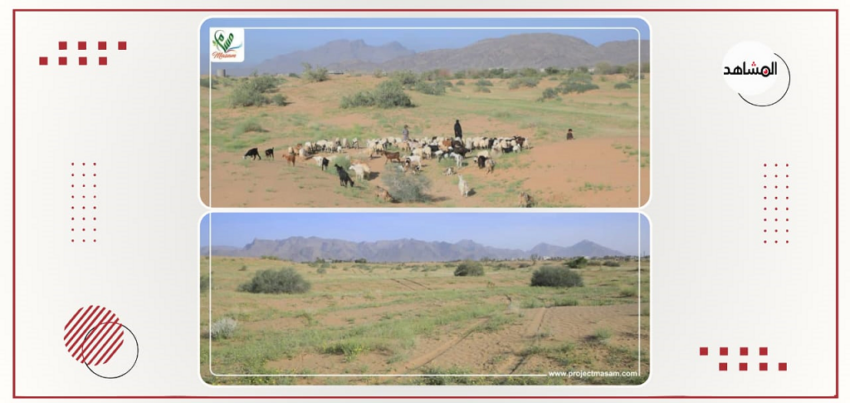By: Makeen Al Awjari
Marib – Farming and livestock are the lifeblood of most rural families in Harib district, southern Marib Governorate, which is under the control of the internationally recognized government (IRG) forces. But with many farms now located in high-risk areas along the frontline, locals say the industry is in decline.
Saleh Al Ghanimi, a social figure in Harib district and owns several farms that grow fruits, vegetables, and grains, has been forced to abandon his farms in Al Ghanim area and other areas due to the conflict.
Al Ghanimi said that many farmers in the Al Ghanim tribe in Mala’a and Al Hajlah have abandoned their farms, which were their only source of income. He added that the farms are now risk areas as they are close to the frontline, and some have been turned into minefields after floods swept away large quantities of mines laid by the Houthi militants.
Al Ghanimi, who once owned 200 sheep and camels and had several farms that grew fruits and vegetables, has been forced to abandon his land and livestock. He and his family now live as IDPs with no source of income.
According to him, the farms far from the frontlines, which farmers could benefit from until three years ago, turned into minefields more than two years ago. Torrential rains washed away hundreds of mines laid by the Houthi group in the mountains of Mala`a overlooking farms in the areas of Al Ghanim, Al Aqeel, Marshah, Wudhu, and Al Hajla of Hareeb district. As a result, two people died and farmers were forced to abandon their land, he added.
little demining efforts
According to Al Ghanimi, the mine clearance efforts carried out by KSrelief’s Masam Project have fallen short of expectations. He said that Masam Project’s work has been ‘humble’ and that many farmers are still afraid to return to their land due to the risk posed by landmines.
Farmers who spoke to Al Moshahid are afraid to return to their farms because every time it floods, new landmines are washed away. This means that the risk still exists in these farms.
Clearing farms and pastures
In the past two years, demining teams from Masam Project have been working to clear and survey areas in Harib district. On May 14, 2023, Masam announced that it had cleared and secured pastures in Darb area after receiving reports from sheep herders that landmines had been found in the area.
According to Masam, a truck driver was injured on March 16, 2023, by a landmine that was washed away by floods in Harib district. Masam pointed out that the floods that flowed on the governorates of Marib and Shabwah caused a large number of landmines to move from the areas controlled by the Houthis to the populated areas and agricultural lands in Harib districts of Marib governorate and Beihan and Aseel districts of Shabwah governorate.
According to a previous press release by Masam, on a single day in August 2022, the Project conducted a massive mine clearance operation in Al Mojabjab area of Harib district. The operation destroyed 1,717 landmines, explosive devices, and unexploded ordnance.
In a press release published on its website, Osama Al Qosaibi, the general manager of the Masam Project, said that field teams had successfully removed 417,103 landmines, unexploded ordnance, and explosive devices from areas that have witnessed or are still experiencing armed conflict since June 2018 to 2023. He also noted that “50 million square meters have been completely cleared.”
With the situation in these farms remaining as it is, the question remains: how long will the official authorities and those involved in landmine clearance be unable to clear these farms accurately and completely so that they are released to their owners as their only source of income?

